May 31, 2025 | 05:28 GMT +7
May 31, 2025 | 05:28 GMT +7
Hotline: 0913.378.918
May 31, 2025 | 05:28 GMT +7
Hotline: 0913.378.918
Intensive cultivation of three crops a year is creating challenges for farmers, as pests increase and soil becomes degraded, leading to declining profits.
In search of solutions for rice farming that will provide farmers with future production strategies ensuring both profitability and environmental sustainability, Vietnam Agriculture Newspaper spoke with Dr. Duong Van Ni, an expert in biodiversity and Chairman of the Mekong Delta Research and Conservation Support Fund.

Dr. Duong Van Ni, a biodiversity expert and Chairman of the Mekong Delta Research and Conservation Support Fund, during a field trip to explore climate-adaptive livelihood models. Photo: Kim Anh.
With the completion of the dike system, rice production in flood-affected upstream areas has been very favorable for farmers in recent years. However, pest outbreaks have been increasing over time. What is the cause of this, Dr. Ni?
A rice variety that continuously "feeds" on the same nutrients from the soil year after year will inevitably face depletion. While some nutrients are replenished from the air and microorganisms, it’s not enough. The only viable solution is to enrich the soil with silt deposits from the river.
In the upstream areas, in the past, floodwaters from the upper reaches would bring silt that farmers would channel into their fields. Around November to December, they would start planting rice. However, at best, they only cultivated two crops a year. The third crop period was reserved for allowing the land and environment time to recover. Most importantly, the soil needed to absorb silt to restore its nutrients and regain its health.
Therefore, it is almost essential to restore the natural balance if farmers want to grow that variety over many years. Since the implementation of the dike system and the production of three rice crops per year, fields were kept dry in the initial years, allowing rice roots to grow deep into the soil for nutrients, resulting in good harvests and increased yields. However, once the nutrients from the top two inches were exhausted, the soil became depleted. This is why farmers have to apply more and more fertilizers to maintain yields; yet, increasing fertilizer use leads to losses, as yields decline and costs rise.
The current issue is that farmers have already shifted to three cropping cycles and the land has been kept dry for 10 to 20 years. Homes have been built low and even graves have been constructed, in some areas, farmers have invested in fruit trees. If floodwaters were released back into the fields like in the past, it would cause flooding, and the residents would never agree to that, even though they understand very well why the soil is depleted. Local authorities also hesitate to make a decision.
You once expressed the viewpoint of "no regrets" regarding farmers in the Mekong Delta, particularly in upstream areas, intensifying the production of three rice crops per year. How do you explain this perspective?
Previously, I presented the concept of "no regrets" to local authorities and staff. It means that some decisions, once made, must be accepted as the path to follow.
More than a decade ago, the agricultural areas in the Mekong Delta faced low incomes that couldn’t cover living expenses. Therefore, the practice of cultivating a third rice crop generated economic benefits and connections for the entire region; that decision was definitely necessary.
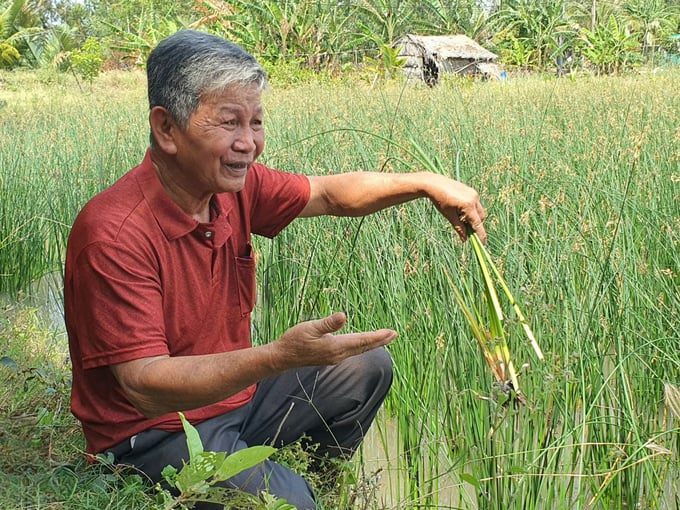
Nan Tuong grass (scientific name Scirpus littoralis Schrad) is one of the crops assessed as suitable for use as a raw material for industry, serving daily life and reducing environmental pollution. Photo: Kim Anh.
When the environment was still abundant, there was the concept of living freely on one’s own land, with the choice to grow vegetables, corn or rice. But once areas were zoned, that freedom became dependent on collective decisions. If everyone around is growing rice and applying fertilizers, you're forced to grow rice too.
Natural resources were once plentiful, humans were part of that environment. However, with the continuous cultivation of three crops a year, the environment’s ability to absorb and regenerate nutrients has been exhausted.
In the upstream areas of Dong Thap province, people have vast experience. After the rice season comes the flood season, and they would fish, cast nets and set traps. But now, with three-crop farming, future generations are gradually losing the knowledge of how to live in the flood season. Even though people clearly understand that the environment is no longer suitable for growing rice, it’s impossible to go back to the old ways.
In a social survey I once conducted in the upstream areas, 80% of children didn’t know how to swim. In the past, around this time of year, the water would rise up to the house, children would play and splash in it until they learned how to swim.
A few years ago, I guided farmers in Tan Hong and Hong Ngu districts of Dong Thap province to catch young linh fish, put them in ponds and feed them supplemental food to raise them. After 2–3 months, the fish grew and could be sold at higher prices. However, only a few households did this; it wasn’t possible to do it across the entire region.
What solutions are there to address the internal challenges of growing a third rice crop in the upstream areas today?
I am considering a solution where areas with ineffective rice farming are zoned off. The government could invest in funding, science and technology to find ways to use the land in an environmentally friendly manner. Instead of growing a third rice crop, farmers could develop crops or livestock that don’t directly serve as food but could be used as raw materials for industry, support daily life and reduce environmental pollution. Among these, Nan Tuong grass (scientific name Scirpus littoralis Schrad) holds a lot of potential.
However, the solution of reducing crops only makes sense when accompanied by efforts to restore the environment and reconnect it with the surrounding ecosystem.
First, there must be consensus across the entire area within the dike system. During the crop reduction period, floodwaters should be allowed into the fields at a measured level, depending on the specific circumstances, to avoid conflicts between rice-growing areas and fruit orchards.
Second, during the crop reduction period, it would be even more valuable if combined with an alternative livelihood model that increases farmers' income. For example, a model of raising fish naturally by releasing additional fingerlings to boost farmers' income would be excellent, enhancing the economic productivity per unit of land.
A more comprehensive solution would involve addressing the surplus labor during the crop reduction period. If job opportunities for farmers could be created during this time, it would be even more beneficial.

Storing natural fish helps farmers increase income on the same unit of land. Photo: Kim Anh.
The solutions mentioned so far are primarily technical. I am more interested in social solutions. There must be a spark of community consensus. At the same time, there needs to be someone to lead the conversation and serve as the focal point.
For example, farmers with the most land within the dike system or a group of large landowners, could form a committed group to reduce crop cycles. These large landowners are primarily profit-driven. If this group is influenced, they can lead other smaller groups and households. At the same time, they would actively seek markets, secure buyers and establish connections with businesses. This would make it easier for local authorities and organizations to get involved. Then, step by step, policies could be adjusted and the role of media in spreading awareness could help drive change.
"Environmental restoration doesn’t just benefit the land in that particular year, but carries over to the next crop, reducing the need for fertilizers, pesticides and production costs, while improving the quality of the rice".
(Dr. Duong Van Ni)
Translated by Phuong Linh
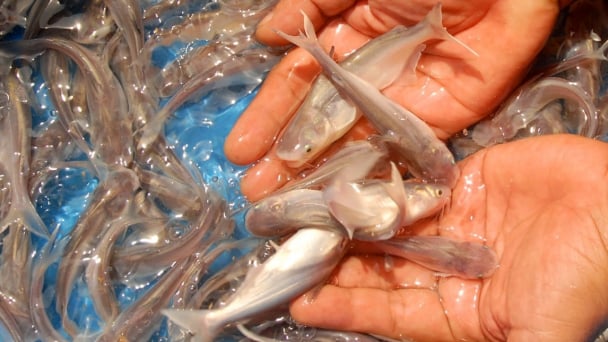
(VAN) Vaccinating juvenile pangasius helps reduce disease, antibiotic use, and farming costs, increasing profits for export-oriented farmers in An Giang.

(VAN) Due to a limited supply of workforce and competitive recruitment requirements, businesses struggle to retain talented veterinary human resources.
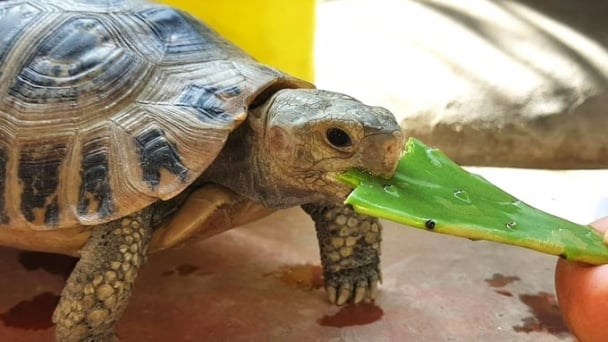
(VAN) WOAH’s guidance aims to mitigate disease risks through a One Health approach that balances economic, conservation, and public health interests.

(VAN) Ms. Nguyen Thi Dung, Deputy Director of Ngoc Hoang Cooperative, shared about the journey of bringing dragon fruit to Europe, achieving annual revenues in the billions of VND.

(VAN) Bamboo products from Thang Tho Bamboo Cooperative have reached many countries around the world, while also creating jobs for local workers.
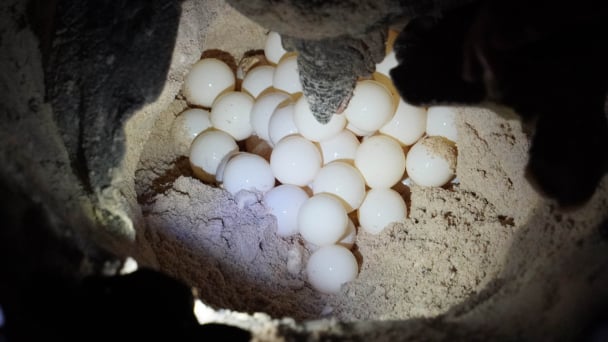
(VAN) The Management Board of Con Dao National Park reported that a green sea turtle, tagged in the Philippines, has traveled thousands of kilometers to lay 84 eggs on Bay Canh Islet.
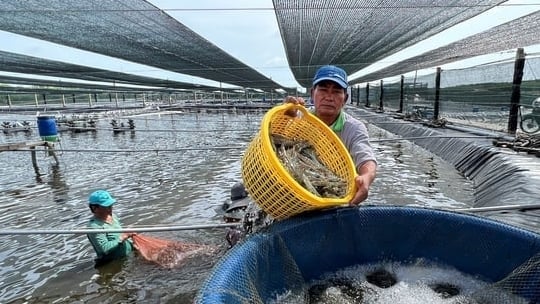
(VAN) Green technology is paving a new path for sustainable aquaculture in the Mekong Delta in particular and across the country in general, helping reduce emissions and adapt to climate change.